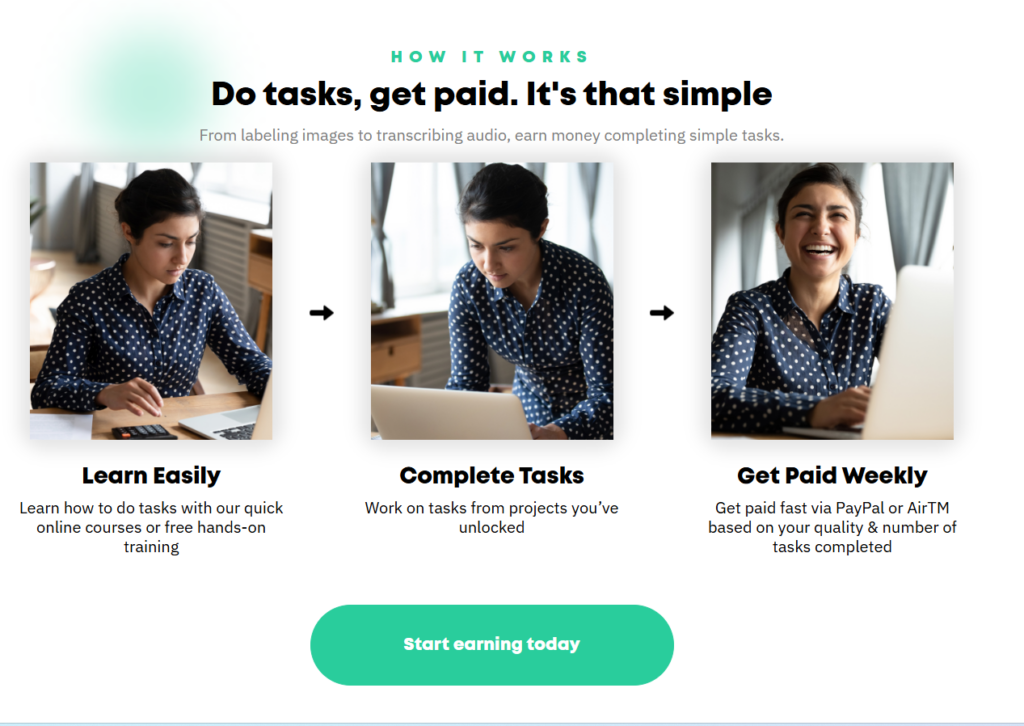The Grants.gov platform, identifiable by its distinctive grants gov logo, serves as the central portal for over 1,000 federal grant programs distributing more than $500 billion annually. Understanding how to effectively use this platform’s Workspace feature can transform your approach to educational funding applications, potentially opening doors to career advancement opportunities that might otherwise remain inaccessible.
Key Takeaways
- The grants gov logo symbolizes access to over $500 billion in annual federal funding across various educational domains
- Grants.gov Workspace allows for collaborative application development with multiple contributors working simultaneously
- Creating a Workspace account requires specific organizational registration steps including DUNS number and SAM registration
- Successful educational grant applications need clear alignment between your goals and the funding agency’s priorities
- Utilizing the platform’s tracking features helps manage application status and deadlines effectively
Understanding the Grants.gov Platform and Its Significance
Grants.gov was established in 2002 as part of the E-Government Act to create a centralized platform for all federal grants. The grants gov logo represents a gateway to funding opportunities across 26 federal agencies, making it an essential resource for educational institutions, researchers, and professionals seeking career advancement through additional qualifications.
The platform handles over 1 million grant applications annually, with education being one of the largest funding categories. Educational grants available through the system include research funding, professional development opportunities, institutional capacity building, and specialized training programs. These funds can significantly impact career trajectories by providing resources for additional certifications, advanced degrees, or specialized training.
For first-time users, the interface might initially appear complicated, but the structured approach of the Workspace feature has simplified the application process considerably. This system allows multiple contributors to work on different parts of the application simultaneously, addressing a key pain point in the grant application process.

Creating and Setting Up Your Grants.gov Account
Setting up a Grants.gov account begins with understanding the different user role requirements. Individual applicants can register directly, while organizational applicants must complete additional steps. The registration process typically takes 1-3 weeks due to verification requirements, so starting well before application deadlines is crucial.
For organizational applications, you’ll need to:
- Obtain a DUNS number (or Unique Entity Identifier)
- Register with the System for Award Management (SAM)
- Create an organizational profile in Grants.gov
- Designate an E-Business Point of Contact
- Add Authorized Organization Representatives
Individual applicants face a simpler registration process but should still prepare proper documentation and information. This includes a valid email address, basic contact information, and creating secure credentials. Once registered, you’ll have access to the Workspace feature, which transforms how you can develop and submit applications.
To ensure smooth account setup, I recommend familiarizing yourself with proper account management techniques before beginning your first application.
Navigating the Workspace Feature for Educational Grants
The Workspace feature, introduced in 2017, allows for collaborative application development with real-time form filling and error checking. This represents a significant improvement over the previous system, which required downloading, completing, and uploading forms individually.
Key benefits of the Workspace for educational grant seekers include:
- Simultaneous editing by multiple team members
- Reusable form templates for similar applications
- Real-time validation to catch errors before submission
- Secure online storage of application materials
- Streamlined submission process with tracking capabilities
I’ve found that the most effective Workspace strategy involves assigning specific sections to team members with relevant expertise. For example, budget specialists can work on financial forms while program designers focus on project narratives, all within the same application package.
The platform’s built-in communication tools also facilitate coordination between contributors, reducing email chains and version control problems that plague traditional application methods. This streamlined approach can be particularly valuable when applying to top national foundations offering educational grants.
Finding Relevant Educational Funding Opportunities
Grants.gov offers powerful search functionality to identify relevant funding opportunities. The advanced search feature allows filtering by category, eligibility, agency, and deadline. For educational grants specifically, focus on the “Education” category, which contains numerous subcategories tailored to different educational purposes.
I recommend creating customized search profiles based on your specific needs:
- Professional development grants for career advancement
- Research funding in specific academic disciplines
- Institutional capacity building opportunities
- Specialized training and certification funding
- Community education and outreach grants
The “Subscribe” feature sends automatic email notifications when new grants matching your criteria are posted. This proactive approach ensures you don’t miss time-sensitive opportunities that could advance your career or educational goals.
When reviewing potential grants, pay close attention to eligibility requirements, funding amounts, and submission deadlines. Many educational grants have specific target demographics or institutional types, and applying for grants that align closely with your profile increases success rates substantially.
Exploring national foundations offering educational grants alongside federal opportunities can expand your potential funding sources significantly.
Preparing Competitive Educational Grant Applications
Successful applications begin with thorough preparation well before the submission deadline. I recommend starting at least 8-12 weeks before the due date for complex educational grants. This timeline allows for proper research, stakeholder consultation, and multiple revision cycles.
Key elements of competitive educational grant applications include:
- Clear alignment between your goals and the funding agency’s priorities
- Specific, measurable objectives with realistic timelines
- Detailed budget justifications for all requested funds
- Evidence of organizational capacity and sustainability
- Compelling narratives that demonstrate impact potential
The Workspace feature particularly shines during application preparation by allowing incremental development and review. Use the platform’s validation tools frequently to identify potential issues before final submission, as correcting errors early saves significant time and stress.
When crafting your narrative sections, focus on how the funded activities will enhance educational outcomes and advance career opportunities. Funding agencies increasingly prioritize applications that demonstrate tangible benefits to individuals and communities, rather than abstract academic goals.
Submitting and Tracking Your Application
The submission process through Grants.gov Workspace involves several verification steps designed to catch errors before final transmission. The system conducts automatic checks for completeness and format compliance, reducing the risk of technical rejections.
The submission workflow typically includes:
- Final review by all contributors
- Form-by-form validation checks
- Authorized user approval and submission
- Receipt of confirmation tracking numbers
- Status updates as the application moves through review stages
I’ve learned that scheduling submission at least 48 hours before the deadline provides a crucial buffer for addressing unexpected technical issues. Grants.gov experiences peak traffic near common deadlines, which can slow system performance and create submission challenges.
After submission, the Workspace tracking features provide visibility into your application’s status. The system generates notifications at key stages, including initial receipt, agency handoff, and final status determination. These updates help manage expectations and planning for potential funding timelines.
Leveraging Educational Grants for Career Advancement
Successfully secured educational grants can become powerful catalysts for career advancement. The funding itself provides obvious financial benefits, but the application experience and project management skills developed through the process also enhance professional capabilities.
Educational grants can advance careers through:
- Funding advanced degrees or specialized certifications
- Supporting research that establishes professional expertise
- Creating professional networking opportunities with funding agencies
- Developing project management and reporting skills
- Building institutional recognition and advancement potential
I recommend developing a strategic approach to educational grants, targeting opportunities that build upon each other to create a coherent career development pathway. Rather than applying for grants opportunistically, identify how each potential funding opportunity contributes to your long-term professional goals.
When implementing funded projects, maintain detailed documentation of outcomes and impacts. These records not only satisfy reporting requirements but also provide compelling evidence of your capabilities for future grant applications and career advancement opportunities.
Common Challenges and Troubleshooting Tips
Despite its improvements, Grants.gov users occasionally encounter challenges that can disrupt the application process. Being prepared for these potential obstacles can reduce stress and ensure successful submissions.
Common challenges include:
- Browser compatibility issues (use Chrome or Firefox for best results)
- Session timeouts during extended form completion
- Attachment size limitations and format requirements
- User permission conflicts in collaborative applications
- Last-minute system slow-downs near major deadlines
The Grants.gov help desk provides support via phone and email, but response times can extend to 24 hours during busy periods. Having alternative contact methods for urgent issues, including the program officer’s direct contact information, can provide critical backup support.
For educational grant applicants specifically, technical requirements for research proposals or curriculum development plans may require specialized file formats or supplementary materials. Verify these requirements early in the application process to avoid scrambling for solutions near the deadline.
Future Developments and Enhancements to Grants.gov
The Grants.gov platform continues to evolve, with several planned improvements aimed at enhancing user experience and application success rates. Staying informed about these changes helps applicants adapt their strategies accordingly.
Upcoming developments include:
- Enhanced mobile accessibility for application management
- Expanded API capabilities for institutional users
- Improved analytics dashboards for tracking funding patterns
- Streamlined registration processes with reduced verification times
- Additional training resources targeted to specific applicant types
The grants gov logo may remain the same, but the platform capabilities continue to expand. For educational grant seekers, these improvements promise to reduce administrative burdens and allow greater focus on developing compelling project concepts and implementation plans.
As



